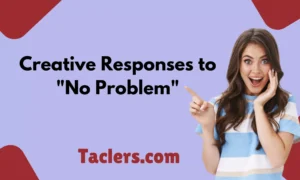Navigating conversations with someone who is inconsistent can be challenging. Whether it’s a friend, a romantic interest, or a colleague, responding thoughtfully to inconsistency can help maintain clarity and establish boundaries.
Here are 30 text replies to handle conversations with an inconsistent guy, each designed to address various aspects of inconsistency while keeping your communication clear and effective.
1. “I’ve noticed some inconsistency in our communication. Can we discuss it?”
Explanation:
Directly addressing the issue can open a dialogue about the inconsistency.
Example:
You: Hey, I’ve noticed some inconsistency in our communication. Can we discuss it?
By saying “Discuss it,” you initiate a conversation about the communication issues.
2. “Could we set some clear expectations for our communication?”
Explanation:
This reply asks for clarity and sets the stage for better communication.
Example:
You: Could we set some clear expectations for our communication?
By asking for “Clear expectations,” you aim to define how you’d like to interact.
3. “I value consistent communication. How can we make that happen?”
Explanation:
Emphasizes the importance of consistent communication and seeks solutions.
Example:
You: I value consistent communication. How can we make that happen?
By saying “How can we make that happen,” you invite a collaborative approach to solving the issue.
4. “I’m feeling a bit uncertain due to the inconsistencies. Can we talk about it?”
Explanation:
Expresses how the inconsistency affects you and suggests a conversation.
Example:
You: I’m feeling a bit uncertain due to the inconsistencies. Can we talk about it?
By expressing your “Uncertainty,” you make it clear that the inconsistency impacts you emotionally.
5. “Let’s make a plan to communicate more regularly. What do you think?”
Explanation:
Proposes a practical solution to improve communication frequency.
Example:
You: Let’s make a plan to communicate more regularly. What do you think?
By suggesting a “Plan to communicate,” you offer a structured approach to improve the situation.
6. “I’ve noticed we’re not always on the same page. How can we fix that?”
Explanation:
Identifies a communication gap and seeks a solution to align better.
Example:
You: I’ve noticed we’re not always on the same page. How can we fix that?
By asking “How can we fix that,” you show a willingness to address and resolve the issue.
7. “Can we clarify our communication expectations to avoid misunderstandings?”
Explanation:
Aims to prevent future misunderstandings by setting clear expectations.
Example:
You: Can we clarify our communication expectations to avoid misunderstandings?
By focusing on “Clarifying expectations,” you work towards preventing future issues.
8. “It seems like our communication is a bit sporadic. Can we address this?”
Explanation:
Highlights the issue and suggests addressing it directly.
Example:
You: It seems like our communication is a bit sporadic. Can we address this?
By pointing out “Sporadic communication,” you bring attention to the problem.
9. “I need more consistency in our interactions. Can we discuss how to achieve that?”
Explanation:
Requests a discussion to improve the consistency of interactions.
Example:
You: I need more consistency in our interactions. Can we discuss how to achieve that?
By stating “Need more consistency,” you emphasize your requirement for stable communication.
10. “I’m finding it challenging to keep up with the inconsistent communication. Can we talk about it?”
Explanation:
Explains the difficulty caused by inconsistent communication and suggests a conversation.
Example:
You: I’m finding it challenging to keep up with the inconsistent communication. Can we talk about it?
By mentioning “Challenging to keep up,” you highlight the struggle caused by the inconsistency.
11. “Let’s establish some regular touchpoints to improve our communication.”
Explanation:
Suggests setting regular times to communicate to enhance consistency.
Example:
You: Let’s establish some regular touchpoints to improve our communication.
By proposing “Regular touchpoints,” you introduce a method to ensure consistent interaction.
12. “I’d appreciate more regular updates from you. What’s a good way to achieve that?”
Explanation:
Requests more frequent updates and seeks a mutual solution.
Example:
You: I’d appreciate more regular updates from you. What’s a good way to achieve that?
By asking for “More regular updates,” you express your need for better communication.
13. “Can we find a way to communicate more predictably?”
Explanation:
Seeks a solution to make communication more reliable.
Example:
You: Can we find a way to communicate more predictably?
By asking for “More predictably,” you aim to make communication more dependable.
14. “I’m noticing some gaps in our communication. How can we address these?”
Explanation:
Identifies gaps and seeks a solution to bridge them.
Example:
You: I’m noticing some gaps in our communication. How can we address these?
By referring to “Gaps in communication,” you highlight the areas needing improvement.
15. “Could we agree on a more consistent way to keep in touch?”
Explanation:
Proposes an agreement to establish a more consistent communication method.
Example:
You: Could we agree on a more consistent way to keep in touch?
By asking to “Agree on a consistent way,” you seek a mutual understanding.
16. “I’m finding it hard to rely on our current communication pattern. Can we adjust it?”
Explanation:
Expresses difficulty with the current pattern and suggests making adjustments.
Example:
You: I’m finding it hard to rely on our current communication pattern. Can we adjust it?
By mentioning “Hard to rely on,” you highlight the issues with the current communication.
17. “I’d like to improve the consistency of our communication. Any suggestions?”
Explanation:
Shows willingness to improve and seeks suggestions for better communication.
Example:
You: I’d like to improve the consistency of our communication. Any suggestions?
By asking for “Suggestions,” you invite ideas for improvement.
18. “Can we discuss how to make our communication more reliable?”
Explanation:
Requests a discussion to enhance the reliability of communication.
Example:
You: Can we discuss how to make our communication more reliable?
By focusing on “More reliable communication,” you seek a solution to improve consistency.
19. “I’m struggling with the irregular communication. Can we talk about how to address this?”
Explanation:
Highlights personal struggle with irregular communication and seeks a conversation.
Example:
You: I’m struggling with the irregular communication. Can we talk about how to address this?
By stating “Struggling with irregular communication,” you make your difficulties clear.
20. “I need more regular communication to feel connected. How can we achieve this?”
Explanation:
Expresses the need for regular communication to maintain a sense of connection.
Example:
You: I need more regular communication to feel connected. How can we achieve this?
By emphasizing “Need more regular communication,” you stress the importance of staying connected.
21. “Let’s set some expectations for how often we should touch base.”
Explanation:
Proposes setting clear expectations for communication frequency.
Example:
You: Let’s set some expectations for how often we should touch base.
By suggesting “Setting expectations,” you aim to create a clear communication plan.
22. “I’m concerned about the inconsistency in our conversations. Can we find a solution?”
Explanation:
Expresses concern and seeks a collaborative solution to the inconsistency.
Example:
You: I’m concerned about the inconsistency in our conversations. Can we find a solution?
By mentioning “Find a solution,” you show a proactive approach to addressing the issue.
23. “Could we agree on a more structured communication schedule?”
Explanation:
Suggests creating a structured schedule to improve communication consistency.
Example:
You: Could we agree on a more structured communication schedule?
By proposing a “Structured schedule,” you aim to bring order to communication.
24. “I’d like to ensure we’re on the same page. Can we talk about our communication?”
Explanation:
Requests a discussion to align communication and expectations.
Example:
You: I’d like to ensure we’re on the same page. Can we talk about our communication?
By focusing on “Being on the same page,” you emphasize alignment in communication.
25. “I’m finding it hard to keep up with the current communication pattern. Any ideas on how to improve?”
Explanation:
Describes difficulty with the current pattern and seeks improvement ideas.
Example:
You: I’m finding it hard to keep up with the current communication pattern. Any ideas on how to improve?
By asking for “Ideas on how to improve,” you invite suggestions for better communication.
26. “Can we agree on a way to communicate more effectively?”
Explanation:
Proposes an agreement to enhance the effectiveness of communication.
Example:
You: Can we agree on a way to communicate more effectively?
By asking to “Agree on a way,” you seek mutual understanding for better communication.
27. “I’d appreciate a more consistent approach to our conversations. What can we do?”
Explanation:
Requests a more consistent approach and seeks suggestions for improvement.
Example:
You: I’d appreciate a more consistent approach to our conversations. What can we do?
By asking “What can we do,” you look for actionable steps to improve communication.
28. “It seems we’re not always consistent in our chats. Can we address this issue?”
Explanation:
Points out the inconsistency and suggests addressing it directly.
Example:
You: It seems we’re not always consistent in our chats. Can we address this issue?
By saying “Address this issue,” you make it clear that the inconsistency needs to be resolved.
29. “I’m having trouble with the irregular communication. How can we make it more stable?”
Explanation:
Highlights issues with irregular communication and seeks solutions for stability.
Example:
You: I’m having trouble with the irregular communication. How can we make it more stable?
By asking “How can we make it more stable,” you focus on finding solutions for a steadier communication pattern.
30. “Let’s discuss how to improve the regularity of our interactions.”
Explanation:
Proposes a discussion to enhance the regularity of your interactions.
Example:
You: Let’s discuss how to improve the regularity of our interactions.
By suggesting a “Discussion on regularity,” you aim to establish a more consistent interaction pattern.

Matthew Porter brings a vibrant energy to Taclers.com with his engaging and witty writing style. As a seasoned journalist, he has an eye for the unexpected and the extraordinary. His compelling narratives on reactions will keep you hooked from start to finish.










